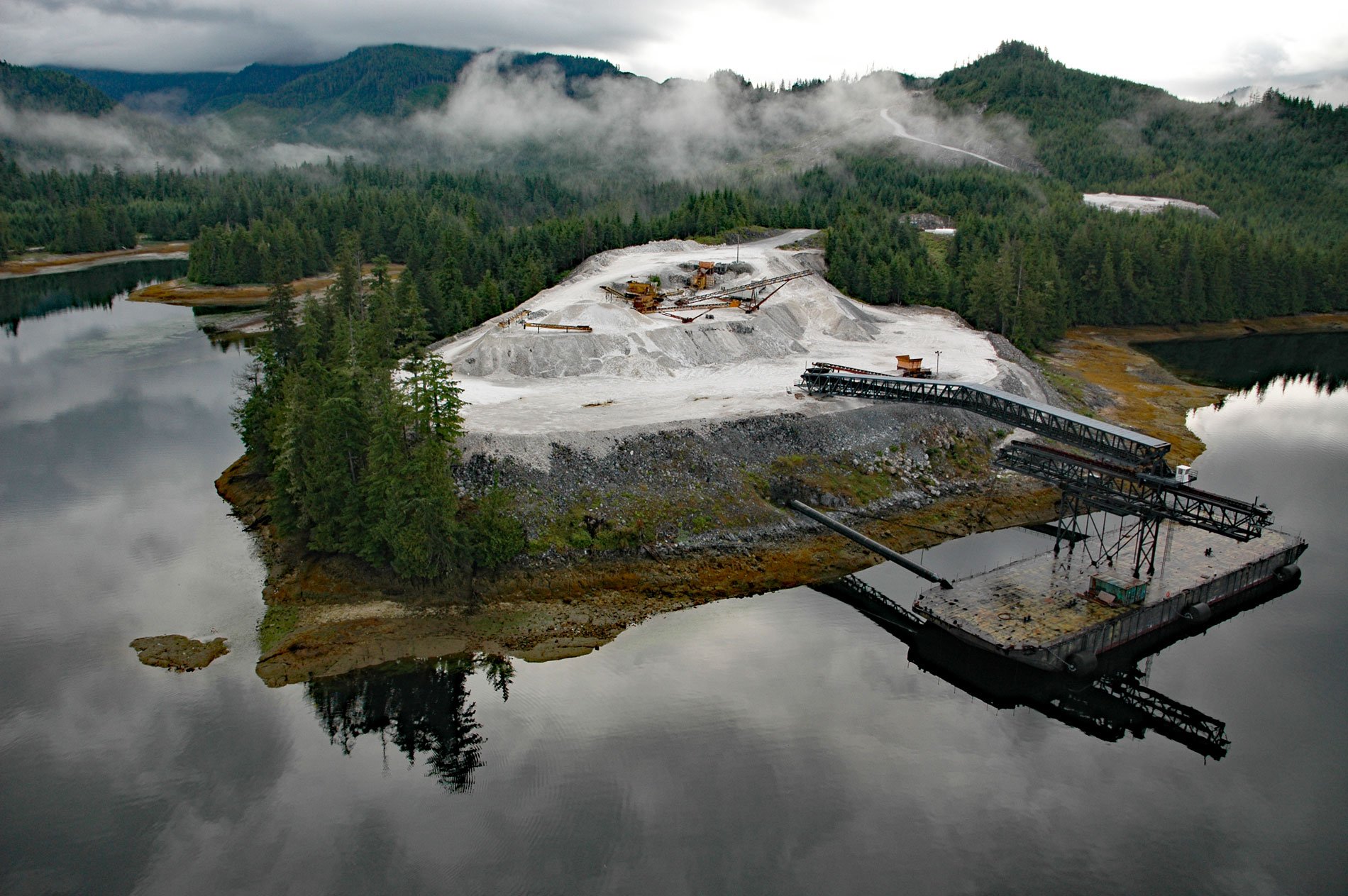Calder is a mining camp for a historic marble quarry and present-day limestone mine situated at the mouth of Marble Creek on Shakan Strait near the entrance to El Capitan Passage on Prince of Wales Island, about 92 miles (148 km) northwest of Ketchikan and 12 miles (19 km) south-southeast of Port Protection, Alaska. The mining settlement was named for Mount Calder, located 6 miles (10 km) to the northwest, which in turn, was named in 1793 by Captain George Vancouver for Captain Robert Calder of the Royal Navy who served in the Seven Years’ War, the American Revolutionary War, the French Revolutionary Wars, and the Napoleonic Wars. Marble Creek starts from the western flank of Red Bay Mountain at an elevation of roughly 1050 feet (320 m) and flows generally south-southwest for 5 miles (8 km) to the northern end of Shakan Strait. The watershed is underlain by carbonate rocks that developed during the Silurian period, or between 444 million to 420 million years ago, and consists mostly of Heceta Limestone and the Bay of Pillars Formation composed of calcareous lithic sandstone, argillite, and limestone.
At the time of European contact in the 18th century, the Prince of Wales Archipelago was inhabited by the Tlingit and Kaigani Haida peoples. The Tlingit habitation of the islands predates that of the Haida, and the Kaigani Haida likely arrived from Haida Gwaii within 200 years before the arrival of Europeans. This part of Prince of Wales Island is the traditional territory or ‘kwaan’ of the Takjik’aan Tlingit people. One of their principal winter villages was at Shakan, about 2 miles (3.2 km) south of Calder on neighboring Kosciusko Island, where in 1902, the Alaska Fish & Lumber Company built a salmon cannery that operated until 1930. Alaska marble was first used by the Tlingit and Kaigani Haida who carved utensils and ornaments from some of the more highly colored varieties. The Russian occupants of Alaska had no interest in the marble, though they may have utilized a few slabs for tombstones. Following the decline of the sea otter fur trade in the 19th century, marble and argillite or ‘black slate’ became a popular carving medium for the Haida and these carvings enabled trade with visiting Europeans and Americans. Argillite carvings, in particular, are commonly seen as tourist art because they were first designed to be exported from the Haida community and created solely as a means of economic prosperity. Haida argillite carvings became a widespread art form are a sculptural tradition that continues today.
The marbles of Southeast Alaska were among the first of the mineral deposits mentioned in the official reports of the United States Government following the Alaska Purchase. For many years, there was no interest in these marbles despite their favorable location near tidewater. In 1896, a marble deposit at Calder was found and developed by the Alaskan Marble Company to extract white, then blue, marble deposits from the Bay of Pillars Formation for use as interior trim, decoration, and tombstones. These tombstones were in considerable demand among the Tlingit and Kagani Haida who substituted them for the carved wooden totems or crest poles. Marble shipments from Calder began in 1902 and by 1920, the supply of high-quality marble was depleted. Operations continued until 1931 when the Treadwell Gold Mining Company took control of the site and began mining a molybdenum prospect which continued until the early 1940s. Today, the Calder mine is operated as a calcium carbonate quarry by Columbia River Carbonates. The quarried rock is crushed to a 6-inch size and then loaded onto barges for shipment to a processing plant at Woodland, Washington to produce ground calcium carbonate powder and slurry. Read more here and here. Explore more of Calder and Shakan Strait here:

